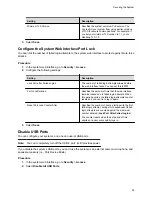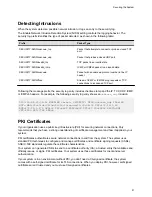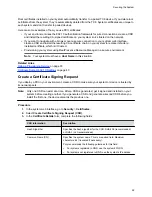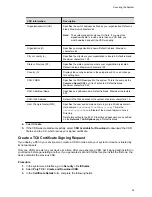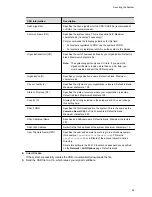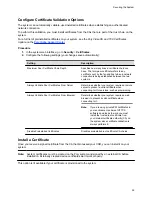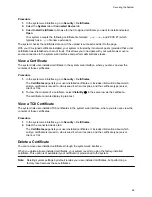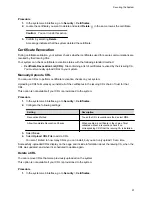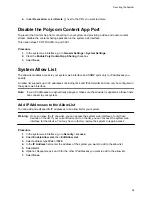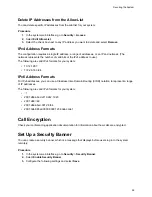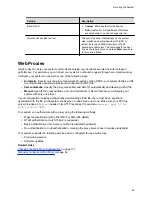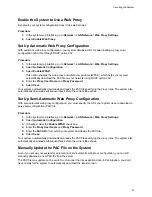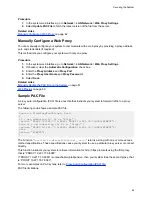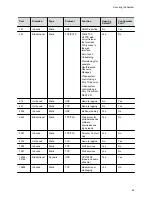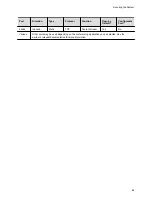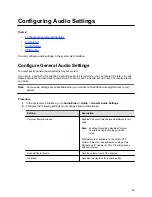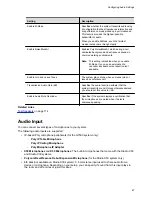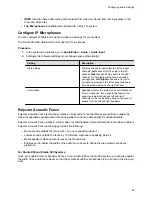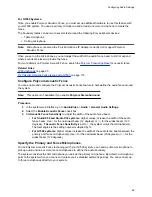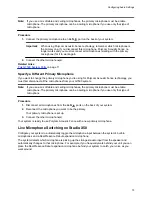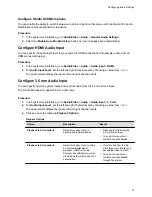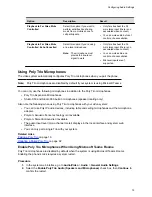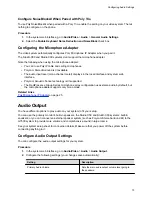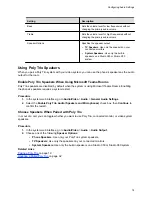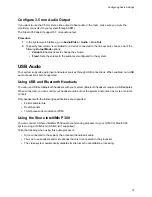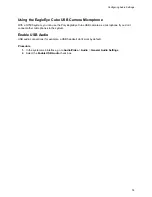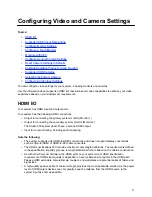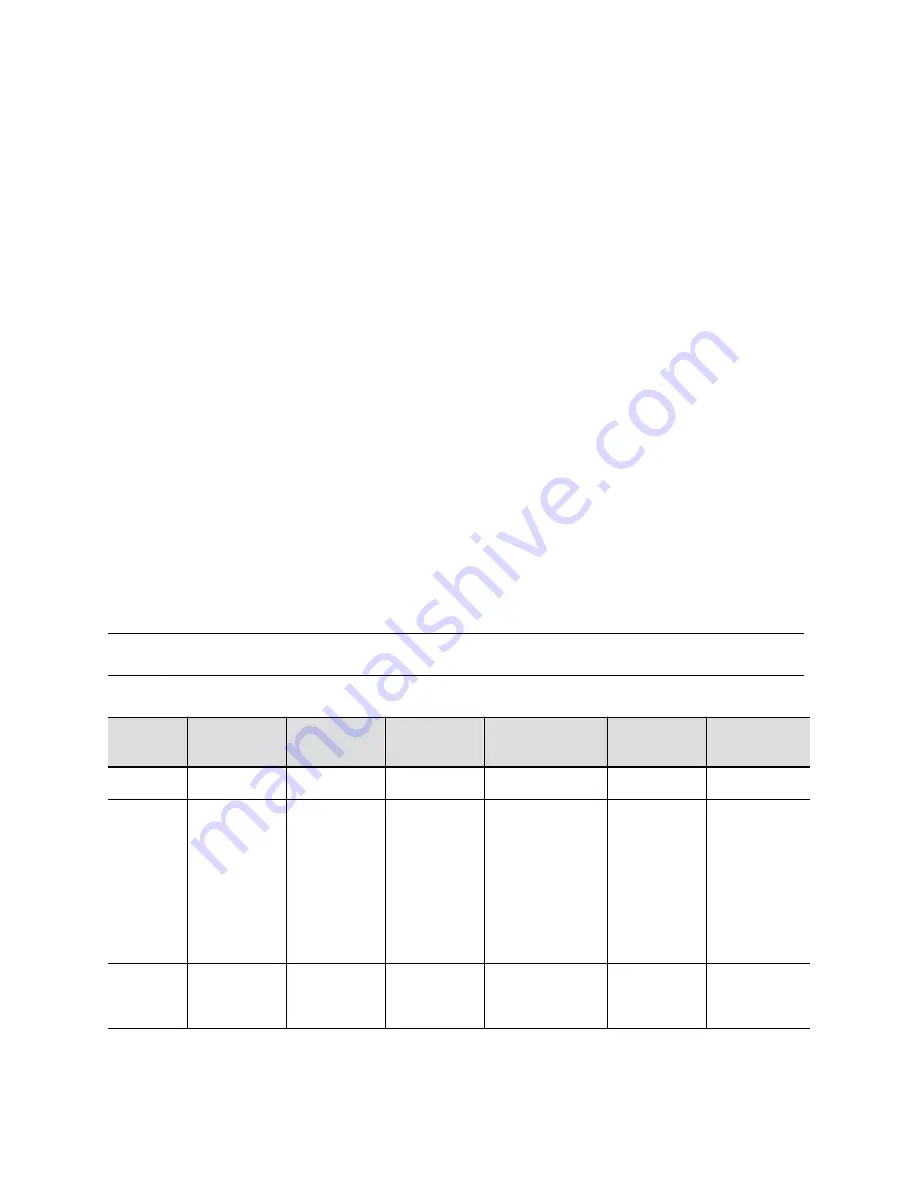
▪ If the first specified proxy is reachable and the authentication is unsuccessful, your system doesn’t
try a different proxy path.
▪ The PAC file must contain pure JavaScript.
▪ Poly recommends your PAC files use the
.pac
or
.proxy
extension.
▪ Poly supports PAC JavaScript functions that return “
PROXY host:port
” and “
DIRECT
”. Poly
doesn’t support return values of “
SOCKS
”, “
HTTP host:port
”, or “
HTTPS host:port
”.
View Connections to the System
Access a list of current connections to your system.
The list provides the following information:
▪ Type of connection (for example, web)
▪ ID associated with the session (for example, admin or user)
▪ Remote address (IP addresses of the hosts accessing your system)
This list doesn’t show details related to sharing content. For example, if someone shares a video from an
HDMI-connected laptop, you don’t see that this device is connected to the system.
Procedure
»
In the system web interface, go to
Diagnostics
>
Sessions
.
System Port Usage
The following table lists the inbound, outbound, and bidirectional ports used by your system.
Note:
Check your conferencing application’s documentation for firewall settings specific to their service.
G7500, Studio X50, and Studio X30 System Port Usage
Port
Direction
Type
Protocol
Function
Open by
Default?
Configurable
Port?
53
Outbound
Static
UDP
DNS
Yes
No
80
Inbound
Static
TCP
HTTP web server
listener that
provides access
to the web
interface.
Redirects all
sessions to
HTTPS on port
443.
Yes
Yes
123
Outbound
Static
UDP
NTP (automatic
time
synchronization)
Yes
No
Securing the System
63


